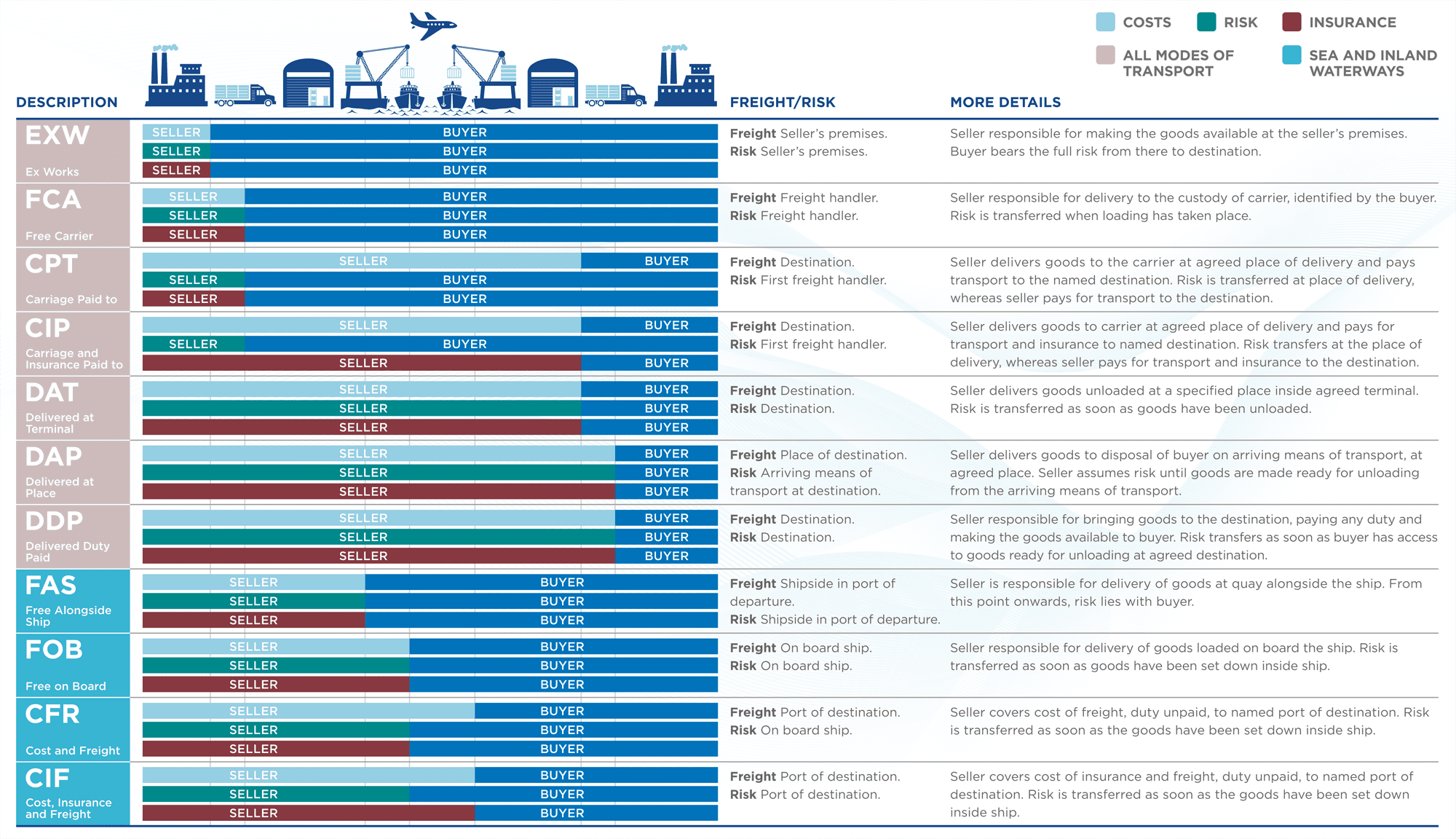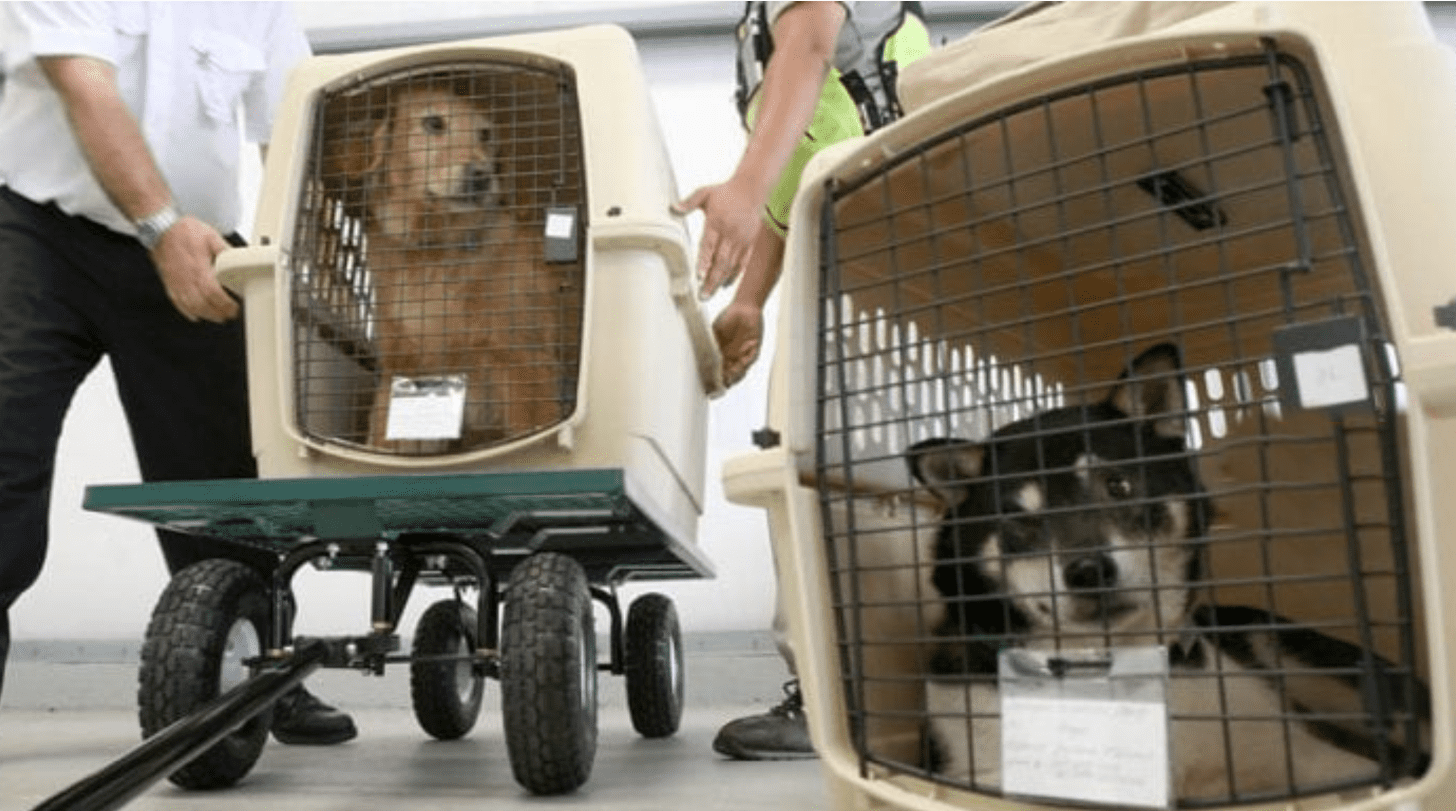Questions And Answers
Find below the most common questions for our services.
Please click in the bars to open the text.
How to Calculate Chargeable Weight for Air Freight Shipments
How to Calculate Chargeable Weight for Air Freight Shipments
The Chargeable Weight of Air Freight shipments are calculated as the Actual Weight (Gross Weight) or the Volumetric (also called Volume or Dimensional) Weight of the shipment, whichever is the greater. This uses an estimated weight that is calculated based on the dimensions (length, width and height) of a package (shipments are always shown in the order of L x W x H). Typically, large items with a light overall weight take up more space on an aircraft than a small, heavy item. That’s why the Airlines charge according to Chargeable Weight.
Chargeable weight is commonly used by air freight forwarders, domestic motor carriers and brokers to calculate their air freight and/or domestic trucking charges.
For those of you who simply want the formulas without a detailed explanation, here you go:
The formula for calculating the volume/dimensional weight for all commodities is 166 cubic inches per pound or 6000 cubic centimeters per kilogram or 366 cubic inches per kilogram.
Multiply the length by the width by the height to obtain the cubic inches, then:
To obtain the dimensional weight in pounds using inches, divide the cubic inch result by 166
To obtain the dimensional weight in kilograms using inches, divide the cubic inch result by 366
Using Dimensions in Centimeters: To obtain the dimensional weight in kilograms using centimeters, divide the cubic centimeter result by 6000
Some definitions and formulas to start:
Chargeable Weight: the greater of actual weight vs. volume weight of a shipment. Chargeable weight is an equilibrium point where the actual weight and volume weight of cargo balance out for the airline, BUT, keep in mind that if the actual weight of the cargo is higher than the “equilibrium point”, the air freight charges are billed on that actual weight.
Volume/Volumetric/Dimensional Weight: Cargo weight based on dimensions of the cargo
Actual Weight: Actual weight of the cargo weighed on a scale
Lb or lbs: pounds
Kg or kgs: kilograms
Cft or ft3: cubic feet
Cbm or m3: cubic meters
Tonne or mt: metric ton 1,000 kgs / 2,204.6 lbs
Basic Conversions:
1 inch = 2.54 centimeters (cms) / 1 cms = 0.393701
1 lbs = 0.453592 kgs / 1 kgs = 2.20462 lbs
Imperial shipping factor examples:
167 in3/lb = 10.4 lb/ft3
Metric shipping factor examples:
5000 cm3/kg = 200 kg/m3
6000 cm3/kg = 166.667 kg/m3
7000 cm3/kg = 142.857 kg/m3
Note: all dimensions and weights are rounded to the nearest whole number.
Combining dimensions in inches and weight in kgs: (L x W x H)/366 (this is commonly done in U.S. exports since dimensions are provided in inches but charges for air freight are always in kgs)
How do I Calculate Volumetric Weight to determine the Chargeable Weight of my Air shipment?
Example 1 – Actual Weight is Greater than Volume Weight:
ABC Company is going to ship some cargo from Los Angeles to Shanghai. The shipment consists of 5 boxes/cartons, each weighing 30kgs, and each measuring 50 x 40 x 40 cms / 19.685 x 15.748 x 15.748 inches.
Actual Gross Weight = 5 boxes x 30kgs each = 150 kgs
Volumetric Weight in kgs using centimeters = (L x W x H) / 6000
Volumetric Weight in kgs using inches = (L x W x H) / 366
Result: 150 kgs is greater than 67 kgs so the Chargeable Weight will be 150 kgs which, in this case, is the Actual Weight.
Example 2 – Volume Weight is Greater than Actual Weight:
ABC Company is going to ship some cargo from Los Angeles to Shanghai. The shipment consists of 3 boxes/cartons, each weighing 10kgs, and each measuring 50 x 40 x 40 cms / 19.6 x 15.7 x 15.7 inches.
Actual Gross Weight = 3 boxes x 10 kgs each = 30 kgs
Volumetric Weight in kgs using centimeters = (50 x 40 x 40cm) x 3 boxes / 6000 = 40 kgs
Volumetric Weight in kgs using inches = (19.6 x 15.7 x 15.7) x 3 boxes / 366 = 40 kgs
Result: 40kgs is greater than 30kgs so the Chargeable Weight will be 40kgs which is also the Volume Weight.
Alternatively you can click here http://cargotracking.utopiax.org/convert2.html to use a conversion tool that calculates chargeable weight to determine if your shipment will be billed on chargeable weight or actual weight.
How does DHL/Fedex/UPS/TNT/Canada Post calculate Air Freight Charges?
Centimeters / Kilograms:
DHL: (L cm A— W cm A— H cm)/5000 or 4000 depending on certain import/country criteria
FedEx: (L cm A— W cm A— H cm)/6000 (new) or /5000 (old, still used in Asia) for international shipments, (L cm x W cm x H cm)/7000 for domestic shipments
UPS: (L cm A— W cm A— H cm)/6000 or /5000 depending on certain import/country criteria
Canada Post (L cm A— W cm A— H cm)/6000 or (L in A— W in A— H in)/166
Inches / Pounds
FedEx Express & UPS: (L in A— W in A— H in)/139
FedEx Ground & UPS Ground: (L in A— W in A— H in)/139
FYI: The above divisors are subject to change by the carriers. Please visit their respective websites for more information.
Incoterms®
Incoterms® is an abbreviation for “International Commercial Terms.” This term represents a very useful way of communication and it’s actually aimed at reducing confusion between buyers and sellers.
So what is an incoterm? An incoterm represents a universal term that defines a transaction between importer and exporter, so that both parties understand the tasks, costs, risks and responsibilities, as well as the logistics and transportation management from the exit of the product to the reception by the importing country. Incoterms are all the possible ways of distributing responsibilities and obligations between two parties. It is important for buyer and seller to pre-define the responsibilities and obligations for transport of the goods.
Here are the main responsibilities and obligations:
- EXW Ex Works
“Ex Works” means that the seller delivers when it places the goods at the disposal of the buyer at the seller’s premises or at another named place (i.e.,works, factory, warehouse, etc.). The seller does not need to load the goods on any collecting vehicle, nor does it need to clear the goods for export, where such clearance is applicable.
- FCA Free Carrier
“Free Carrier” means that the seller delivers the goods to the carrier or another person nominated by the buyer at the seller’s premises or another named place. The parties are well advised to specify as clearly as possible the point within the named place of delivery, as the risk passes to the buyer at that point.
- CPT Carriage Paid To
“Carriage Paid To” means that the seller delivers the goods to the carrier or another person nominated by the seller at an agreed place (if any such place is agreed between parties) and that the seller must contract for and pay the costs of carriage necessary to bring the goods to the named place of destination.
- CIP Carriage And Insurance Paid To
“Carriage and Insurance Paid to” means that the seller delivers the goods to the carrier or another person nominated by the seller at an agreed place (if any such place is agreed between parties) and that the seller must contract for and pay the costs of carriage necessary to bring the goods to the named place of destination.
‘The seller also contracts for insurance cover against the buyer’s risk of loss of or damage to the goods during the carriage. The buyer should note that under CIP the seller is required to obtain insurance only on minimum cover. Should the buyer wish to have more insurance protection, it will need either to agree as much expressly with the seller or to make its own extra insurance arrangements.”
- DAT Delivered At Terminal
“Delivered at Terminal” means that the seller delivers when the goods, once unloaded from the arriving means of transport, are placed at the disposal of the buyer at a named terminal at the named port or place of destination. “Terminal” includes a place, whether covered or not, such as a quay, warehouse, container yard or road, rail or air cargo terminal. The seller bears all risks involved in bringing the goods to and unloading them at the terminal at the named port or place of destination.
- DAP Delivered At Place
“Delivered at Place” means that the seller delivers when the goods are placed at the disposal of the buyer on the arriving means of transport ready for unloading at the named place of destination. The seller bears all risks involved in bringing the goods to the named place.
- DDP Delivered Duty Paid
“Delivered Duty Paid” means that the seller delivers the goods when the goods are placed at the disposal of the buyer, cleared for import on the arriving means of transport ready for unloading at the named place of destination. The seller bears all the costs and risks involved in bringing the goods to the place of destination and has an obligation to clear the goods not only for export but also for import, to pay any duty for both export and import and to carry out all customs formalities.
RULES FOR SEA AND INLAND WATERWAY TRANSPORT
- FAS Free Alongside Ship
“Free Alongside Ship” means that the seller delivers when the goods are placed alongside the vessel (e.g., on a quay or a barge) nominated by the buyer at the named port of shipment. The risk of loss of or damage to the goods passes when the goods are alongside the ship, and the buyer bears all costs from that moment onwards.
- FOB Free On Board
“Free On Board” means that the seller delivers the goods on board the vessel nominated by the buyer at the named port of shipment or procures the goods already so delivered. The risk of loss of or damage to the goods passes when the goods are on board the vessel, and the buyer bears all costs from that moment onwards.
- CFR Cost and Freight
“Cost and Freight” means that the seller delivers the goods on board the vessel or procures the goods already so delivered. The risk of loss of or damage to the goods passes when the goods are on board the vessel. the seller must contract for and pay the costs and freight necessary to bring the goods to the named port of destination.
- CIF Cost, Insurance and Freight
“Cost, Insurance and Freight” means that the seller delivers the goods on board the vessel or procures the goods already so delivered. The risk of loss of or damage to the goods passes when the goods are on board the vessel. The seller must contract for and pay the costs and freight necessary to bring the goods to the named port of destination.
‘The seller also contracts for insurance cover against the buyer’s risk of loss of or damage to the goods during the carriage. The buyer should note that under CIF the seller is required to obtain insurance only on minimum cover. Should the buyer wish to have more insurance protection, it will need either to agree as much expressly with the seller or to make its own extra insurance arrangements.”
What Is It Like for Pets to Fly

One aircraft fueler took to Reddit to give some words of advice. While the fueler explained that in most cases, the airline will attempt to handle pet travel as best as possible, factors like noise on the ramp can’t be avoided.

Customs Fees
shshsdghsdh
sdhdshdshdsh
ICMS
shshsdghsdh
sdhdshdshdsh
Delivery
shshsdghsdh
sdhdshdshdsh


